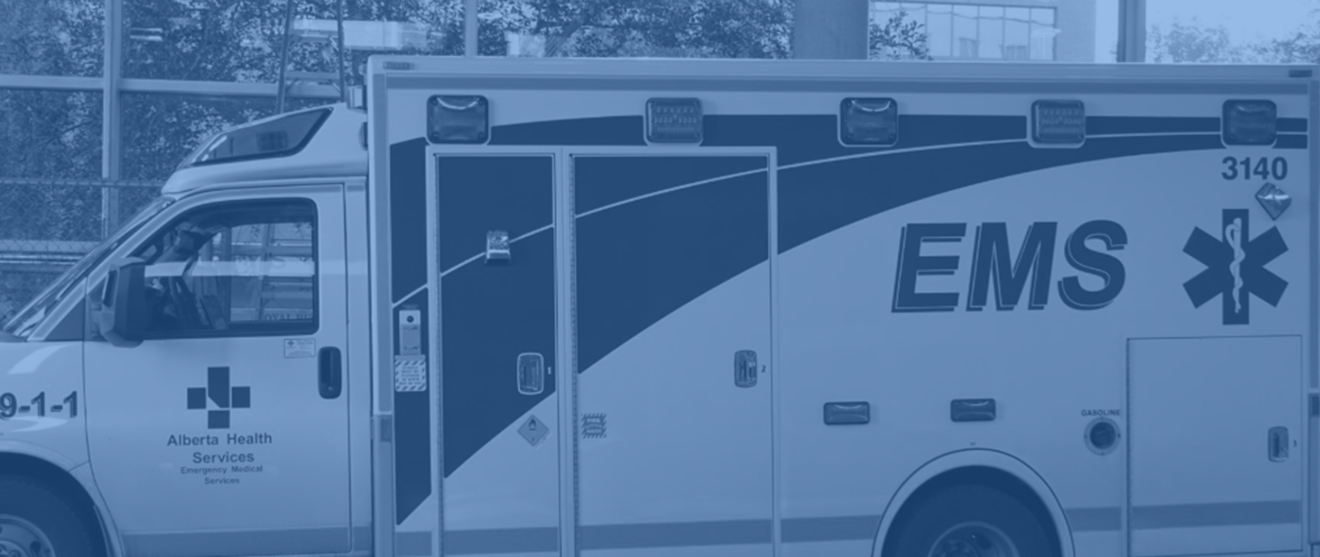This article was originally published by Airdrie Today on April 22, 2021. You can read the full article below or read the original article here.
In early April, Airdrie senior Joyce Grewcutt suffered a choking incident that led to her daughter calling her an ambulance.
For nearly 20 minutes, Grewcutt laid on the floor of her home, trying to regain her breathing, while her daughter simultaneously tended to her and called ambulance dispatch.
“We phoned 911 and the fire engine came first,” Grewcutt said. “But when I’m laying on the floor, the firemen can’t very well move me into the fire truck to take me anywhere. The ambulance isn’t coming [quickly] because it’s coming from Langdon or Calgary on 17 Avenue. That’s a long time to wait and there’s some confusion. It’s just not right.”
While Grewcutt was ultimately OK and did not require a trip to the hospital, she said the incident reminded her of an issue that has plagued Airdrie for years – the city’s dearth of health-care services.
“When you need help, they’re not there and it’s pretty terrifying,” she said, adding she’s lived in Airdrie for more than 40 years and the issue of health-care access has persisted throughout that time.
Grewcutt’s lengthy wait for an ambulance is not particularly uncommon in Airdrie. According to the Health Sciences Association of Alberta (HSAA), ambulance coverage in Calgary’s outlying communities is often under-serviced.
“Unfortunately, what I’m seeing is the current government is creating a crisis within our health-care system by not properly funding our resources,” said Mike Parker, the president of the HSAA – the union that represents Alberta’s paramedics and other health-care professionals. “When you choose to not match resources to call volume – which they’ve been doing for quite some time – this is what it looks like.”
Parker, who is also an advanced care paramedic, posted a public letter on the HSAA’s website April 8 that highlighted a similar crisis in Cochrane. According to his letter, Cochrane did not have local Emergency Medical Services (EMS) availability on at least 10 occasions between mid-January and mid-February.
The union president stated the ability of smaller communities to offer rapid ambulance service is often jeopardized when their local crews are called into incidents in Calgary, where a lack of sufficient resources and higher call volumes lead to a resource drain from rural areas.
He said ambulances are not only called into Calgary from places like Cochrane and Airdrie, but often farther-away communities such as High River and Kananaskis.
“This problem exists because the current government is choosing not to properly staff and have enough crews available to ensure the urgent needs of Calgarians and the residents of surrounding communities are met,” he wrote.
“When Calgary gets busy, crews from surrounding areas…are dispatched to the city.”
When that happens, ambulances from even smaller towns have to respond to incidents in Calgary’s bedroom communities. According to statistics supplied by HSAA, an ambulance from Strathmore responded to an incident in Airdrie on April 9 and took 22 minutes to arrive at the scene. That same night, an ambulance coming from Didsbury responded to an incident in Airdrie from 67 kilometres away, while another ambulance from Linden – approximately 70 kilometres away – also responded to an incident in Airdrie.
Airdrie’s occasional lack of ambulance availability is even more alarming, according to Parker, when considering the city still does not have its own hospital.
“When you don’t have access to those 24-7 emergency care facilities, EMS should be available to you in your community,” he said. “As populations grow and call volume increases, we’ve been under a hell of a lot of stress from things like the COVID environment. Our health system is in absolute disarray trying to match this.”
While he couldn’t say exactly how much more funding is needed to mitigate the situation, Parker said the solution to the problem is for the Province to increase funding for EMS in order to match resources to the growing call volume in large urban centres like Calgary.
“It’s black and white – stop drawing down by ensuring resources are sustained in metro cities,” he said. “That way, the responding units assigned to Airdrie are available for the citizens. We should all have equal access and opportunity for an ambulance to show up at our door in a respectable time, and an hour [wait] isn’t that.
“If you’re going to actually build an emergency service that protects the people of this province, then build one that functions,” he added. “Stop relying on a truck from Cochrane to be Airdrie’s first response unit.”
In a statement to Great West Media, Airdrie-Cochrane MLA Peter Guthrie acknowledged EMS coverage has been an issue in the riding for many years, but that steps are being taken by the Province to reduce wait times.
He said in his opinion, one of the major issues surrounding EMS is the timing of handing off a patient to the hospital for care.
“There isn’t a really good way for EMS to do that hand-over, so what ends up happening is you have ambulances and the staff waiting with that patient and they can wait with that patient up to eight hours before they can triage that patient to the hospital,” Guthrie said.
“We want to be able to make sure that the patient is able to get the attention that they need sooner. That’s the ultimate goal. Improvements are being made – I believe the services are there.”
—With files from Chelsea Kemp/Cochrane Eagle
